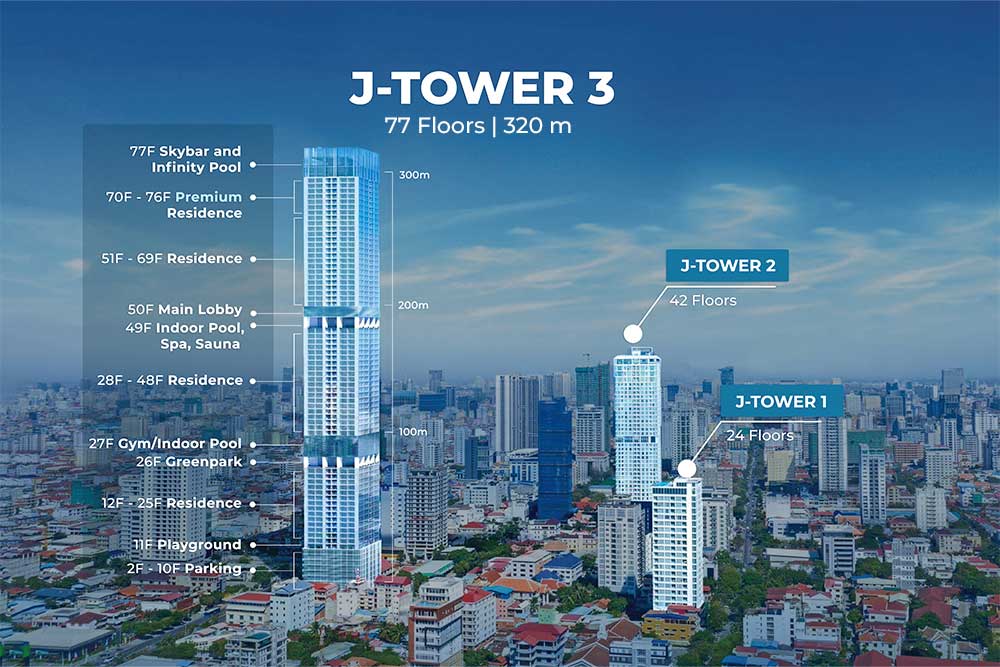Housing in the Philippines
- International Property Alerts
- July 14, 2025
Many people are looking for better options when it comes to housing in the Philippines. Whether you’re a local resident, an overseas Filipino worker (OFW), or an investor, understanding how homes are built, priced, and offered here can help you make smarter decisions. The housing market is wide and full of choices. Knowing what fits your needs and budget will save you time and money.
At International Property Alerts, we make this process easier. Our goal is to help you find clear answers about housing options, locations, and prices in the country. By learning more about how the housing system works, you’ll be better prepared whether you’re buying, renting, or simply exploring your choices.
Understanding the Housing Market in the Philippines

Who Is Buying, Renting, or Investing?
Many people take part in the growing market for housing in the Philippines. For instance, locals buy homes to raise families, while OFWs send money to secure property back home. Investors, both local and foreign, also see the country as a good place to grow their money.
Differences Between Rural and Urban Housing
Urban areas often offer more choices in the types of housing in the Philippines, while rural areas tend to be quieter and less crowded. In addition, cities have higher costs and tighter spaces, while provinces offer more room but fewer services.
Demand, Growth, and Occupancy Rates
Demand keeps rising as more people move to cities for work. Above all, the housing prices in the Philippines go up faster in busy areas. In cities, most units get filled fast, while rural places still have space to grow.
How People Move and Settle
People often move for jobs, school, or better homes. Therefore, this shift increases demand for government housing projects in the Philippines and expands the list of socialized housing in the Philippines. If you’re planning to buy, rent, or invest, learning more about real estate in the Philippines can help you choose the right area and property type.
Types of Housing in the Philippines
There are many types of housing in the Philippines that suit different needs and budgets. For instance, some people want privacy and space, while others look for lower costs or shared living. Each type has its own pros and cons, and choosing the right one depends on your goals—especially if you’re exploring international property options.
Below are the most common types of homes found across cities and provinces:
- Condominiums: Private units in a building, often found in cities.
- Apartments: Rental spaces that are usually smaller and cheaper than condos.
- Townhouses: Homes that share walls with neighbors, often in gated areas.
- Detached single-family homes: Standalone houses with private land space.
- Boarding houses & shared rooms: Cheaper living spaces shared with others.
- Informal settlements: Areas with houses built without full legal documents.
If you’re looking for a place that fits your lifestyle and budget, our properties offer many choices. You can browse homes by price, location, or type. Each listing includes clear details to help you decide faster. Whether you’re buying or renting, there’s something that fits your needs.
Government Housing Projects in the Philippines
NHA and Its Role
The National Housing Authority (NHA) builds and manages government housing projects in the Philippines. For instance, it helps low-income families find safe and affordable homes. It works with local areas to offer land, build homes, and move people into better places.
Key Government Housing Programs
Some of the most known housing efforts are simple and helpful. In addition, they give more people a chance to have a home.
Here are a few important programs:
- Pabahay Program: Offers free or low-cost homes to families with limited income
- BP 220: Builds smaller homes with cheaper costs and simpler rules
- 4Ps Housing Tie-in: Helps families already in the 4Ps program find stable housing
Current Active Projects
Today, many areas still grow with new homes for the public. So, here are some government housing projects in the Philippines that are now active:
- Bistekville Housing (Quezon City)
- Disiplina Village (Valenzuela City)
- San Jose Heights (Bulacan)
- Pabahay sa Bagong Bayani (Taguig City)
- Southville Housing Projects (Laguna and Cavite)
Why These Projects Matter
These homes help fix problems like poor living conditions and overcrowding. Above all, they support those in the list of socialized housing in the Philippines and play a big role in solving the wider need for housing in the Philippines, as explained further in our country guide in the Philippines.
List of Socialized Housing in the Philippines

What Is Socialized Housing?
Socialized housing gives simple homes to families with low income. These homes cost less but still offer safety and shelter. In other words, they help solve the housing gap for many people. They are part of the list of socialized housing in the Philippines and link to wider housing programs in the Philippines.
Luzon-Based Housing Options
Luzon has many low-cost homes in Bulacan, Rizal, and Laguna. These are often close to schools, roads, and jobs. For instance, some are part of government housing projects in the Philippines. Others come from private builders who offer new types of housing in the Philippines.
Projects in Visayas Region
Cebu, Iloilo, and Tacloban offer socialized housing to many people. Also, these homes help those in crowded or unsafe places. They support better living at a fair cost. These areas show how types of housing in the Philippines can vary under housing programs in the Philippines.
Affordable Homes in Mindanao
Mindanao gives more housing choices to families in Davao, Cagayan de Oro, and beyond. Many homes here cost less but offer strong value. After that, more projects will likely grow. This also helps improve housing prices in the Philippines through government housing projects in the Philippines.
Housing Programs in the Philippines
Public and Private Housing Support
Many housing programs in the Philippines are offered by the government and private developers. For instance, these help low-income families, workers, and first-time buyers. They aim to make housing easier to own or rent. Most programs are also tied to government housing projects in the Philippines.
Who Can Apply for These Programs
Most programs are open to Filipino citizens over 18 with a steady income. In other words, people must prove they can pay monthly dues. Each program may have added rules depending on the provider. These apply to both types of housing in the Philippines and social units.
Financing Options for Buyers
Many housing programs in the Philippines offer simple loan options to help more people afford homes. In addition, these loans make it easier to manage monthly payments, especially when buying through government housing projects in the Philippines or other low-cost units.
Here are common financing choices available to buyers:
- Pag-IBIG Fund: Offers low interest and long payment terms for qualified members.
- SSS Housing Loan: Supports members who want to build or buy a home.
- Bank Financing: Gives flexible rates and faster loan approvals from private banks.
If you’re unsure which option fits your needs, we can help you compare, apply, and move forward with confidence. To see how we support buyers through every step of the process, explore our services.
Special Offers for Priority Sectors
Some housing programs in the Philippines focus on helping OFWs, soldiers, or public workers. After that, many get easier rules or added support. These special plans give more people a chance to own a home. They are part of the list of socialized housing in the Philippines.
Tips for Buying or Renting a House in the Philippines
Prepare the Right Documents
Make sure all your documents are complete and updated before starting. In addition, this helps avoid delays or mistakes. Bring valid ID, proof of income, and signed agreements when dealing with housing programs in the Philippines or private sellers.
Watch Out for Scams
Scams are common, especially online and in fast-moving markets. So, it’s important to stay alert and know what to check. Here are two simple reminders:
- Always ask for valid ID and license: Fake agents usually avoid showing full details
- Never send money without proof: Only pay after checking ownership and documents
Learn to Negotiate
Being ready to negotiate can help you save money or get better terms. Also, look at other listings nearby to see if the price is fair. Whether you’re renting or buying, this matters in all types of housing in the Philippines.
Work With a Licensed Agent
Good agents make buying or renting easier. For instance, they help with visits, papers, and price talks. Keep these points in mind:
- Check their PRC license: A real broker will not hide this
- Ask for their past work: Trusted agents will show happy client records
They can also guide you through government housing projects in the Philippines.
Double-Check Before You Decide
Before you sign anything, take one last look at the price, location, and terms. Therefore, checking every detail now can save you bigger problems later. At International Property Alerts, we help you find safe and trusted options for housing in the Philippines.
Key Takeaway
Understanding housing in the Philippines is important whether you plan to rent, buy, or invest. In addition, knowing your options helps you make smart and safe choices. From documents and prices to housing types and legal tips, being prepared gives you confidence.
So, if you’re ready to start, explore more at International Property Alerts. Browse our listings or get updates on new property developments in the Philippines—all made simple and easy for you. If you have questions or need help, feel free to contact us anytime.
FAQs
What are the common types of housing in the Philippines?
There are many types of housing in the Philippines, such as condos, townhouses, and apartments. In other words, each type fits a different budget and lifestyle. Some are shared, while others offer more space and privacy.
Are there government housing projects in the Philippines?
Yes, the government builds homes for low-income families through the National Housing Authority. For instance, projects like Pabahay and Southville offer safe and affordable homes. These are called government housing projects in the Philippines.
Where can I find the list of socialized housing in the Philippines?
You can find the list of socialized housing in the Philippines in areas like Bulacan, Laguna, Cebu, and Davao. Also, developers like Bria and Lumina offer low-cost units. These homes are made for families with smaller incomes.
How much do houses cost in the Philippines?
Housing prices in the Philippines vary by location and type. For instance, condos in Metro Manila can reach ₱45 million, while rural homes may cost ₱1 million. Always check if the price is for a new or resale unit.
Who can apply for housing programs in the Philippines?
Most housing programs in the Philippines are for Filipino citizens over 18 with a steady income. In addition, there are special plans for OFWs and public workers. Pag-IBIG and SSS offer loan options to make buying easier.
About International Property Alerts
International Property Alerts is a premier global platform connecting real estate investors with handpicked opportunities in emerging and lifestyle-driven markets. Through curated listings, expert guidance, and market insights, we help buyers make confident property decisions worldwide.
Media Contact:

Phone: +4477 1923 8132
📱 WhatsApp: +63927 073 9530
Email: office@internationalpropertyalerts.com
Services
Related Post
- Best Places To Retire
- Hidden Places Destination
- Best Regions To Retire
- Guide To Global Life
- Affordable Places To Retire
- Elly's Insights
- Business Outlook
Discover Prime Global Opportunities

Elle Resort & Beach Club – Your Prime Beachfront Investment
Elle Resort & Beach Club offers a rare chance to own property in one of the most desirable coastal locations. With limited units, strong capital growth potential, and unmatched resort facilities, this is your opportunity to secure a beachfront lifestyle with long-term value.

Smarter Property Investments Start Here
Thinking about buying property abroad? Don’t make the move without the right knowledge. Our Free Buyers Guide gives you essential insights on legal steps, taxes, financing, and the best markets worldwide. Trusted by international buyers and investors.

Your Perfect Home Awaits at Sudara Residences
Wake up to bright, spacious living with stunning views and modern comforts. Whether for family living, retirement, or a stylish retreat, Sudara Residences makes your dream home a reality

Own a Piece of Cambodia’s Thriving Property Market
Discover curated property listings with IPS—residential, commercial, villas, land—and get expert guidance through every step.
BONUS: FREE Cambodia Buyer’s Guide

Grow Your Business - Advertise in a Prime Spot
High visibility. Targeted audience. Maximum exposure. Rent this space and let your brand shine.

Got Properties to Sell?
Get your properties in front of high-intent investors. Showcase your listings to buyers worldwide.

Exchange Without Borders
From pounds to pesos, yen to dollars. ⚡ Quick. Easy. Secure.
